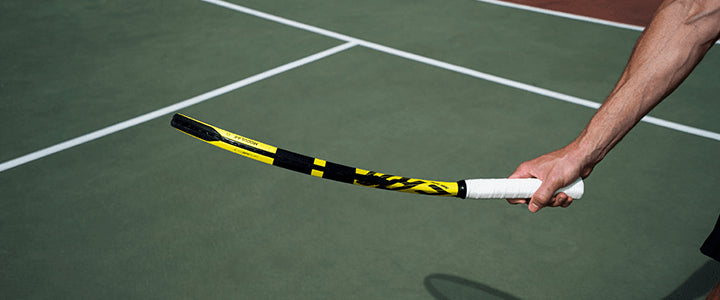Tennis racket stiffness, often referred to as frame stiffness, is a measure of a racket's flexibility or rigidity.
This characteristic is influenced by the materials used in the racket's construction, its design, and its overall structure.
Stiffness is usually measured on a numerical scale, with higher values representing stiffer rackets and lower values indicating more flexible ones. For example, a racket with a stiffness rating of 70 or higher is considered relatively stiff, while a rating of 60 or lower is generally considered more flexible.
Why Does Tennis Racket Stiffness Matter?
Tennis racket stiffness matters for several reasons:
-
Power vs. Control:
- Stiffer rackets tend to provide more power due to their rigidity. They offer better energy transfer from the strings to the ball, resulting in greater ball speed and depth.
- More flexible rackets, on the other hand, provide better control. They allow for increased dwell time, enabling players to place the ball with more precision.
-
Arm Comfort:
- Stiffer rackets can be harsher on the arm, potentially leading to discomfort or even injury, such as tennis elbow. Players with arm issues may prefer a more flexible racket to reduce the impact on their joints.
-
Feel and Touch:
- Racket stiffness also affects the feel and touch of your shots. A flexible racket provides a softer, more muted feel at impact, making it easier to generate spin and finesse shots.
- Stiffer rackets tend to provide a crisper, more direct feel, which some players prefer for a faster-paced game.

Choosing the Right Stiffness
The choice of racket stiffness largely depends on your playing style and preferences. Here are some guidelines to help you choose the right stiffness for your game:
-
Power Players:
- If you rely on power and like to hit the ball hard, stiffer rackets can help maximize your shot speed. Look for a racket with a higher stiffness rating.
-
Control Players:
- Players who prioritize control and shot placement may benefit from a more flexible racket. This can help them finesse their shots and place the ball precisely.
-
Arm Health:
- If you have had arm issues or are concerned about tennis elbow, consider a more flexible racket to reduce the risk of injury.
-
All-Around Players:
- If you're looking for a balanced approach, consider a racket with moderate stiffness. It provides a compromise between power and control, suitable for various playing styles.
LOOKING FOR A NEW RACKET? CHECKOUT OUR SELECTION OF NEW AND DISCOUNTED MODELS
Tennis racket stiffness is a fundamental aspect of racket design that can significantly impact your performance on the court. Your choice of racket stiffness should align with your playing style, physical condition, and personal preferences. While there is no one-size-fits-all answer, understanding the trade-offs between power, control, and comfort can help you make an informed decision when selecting your next tennis racket. Remember that it's always a good idea to demo rackets and consult with a knowledgeable tennis coach or pro shop for guidance in finding the perfect racket stiffness for your game.

